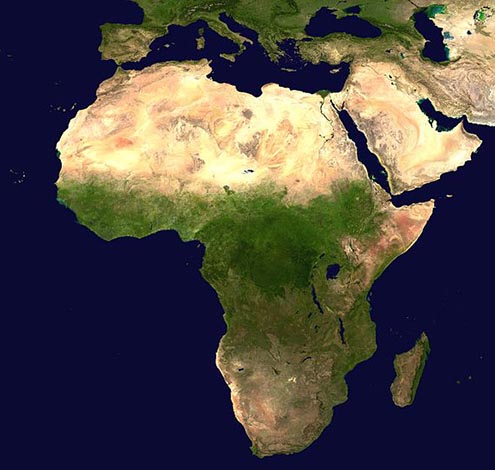

Prof Seidu Mohammed told journalists in New York that the Nigeria’s nanosatellite would be launched alongside four other countries between May 23 to May 27.
Nigeria is to launch Africa’s first nanosatellite (an artificial satellite with a wet mass between one and 10 kg 2.2–22 lb) into the orbit, the Director-General of National Space Research and Development Agency (NASRDA), Prof Seidu Mohammed, has said.
The NASRDA chief disclosed that the nanosatellite would be launched “within the window of May 23 and 27” from the launch base at Miami, Florida, U.S. According to him, the latest satellite to be launched is another feat achieved by the Nigerian engineers.
Mohammed said: “Nigeria, along with other four countries – Japan, Ghana, Bangladesh and Nepal – in the last one year, came together to work in a constellation to build about five nanosatellites. “You may ask ‘what are these nanosatellites for?’ It’s a scientific satellite that is to study environmental parameters.
“They would help in most of these environmental issues to study them – environmental characterization. “In addition to that, they would also be carrying camera that would acquire some form of data. “And what we have also demonstrated by this is the fact that Nigerian engineers and scientists earlier built Nigerian Sat-X using the laboratory in Missouri.
“They’ve gone ahead again to build nanosatellite in the laboratory in Kyushu University in Japan and all these are parts of efforts to sustain technology already transferred to Nigerian scientists and engineers”. The NASRDA chief said in addition to the feat achieved by the Nigerian engineers, there was the need to encourage the youth to take career in space science and technology.
“Those nanosatellites, each time they are within the Nigerian territory, would be singing National Anthem. “So those who carry UHF radio would be able to receive it and all these are part of Nigeria’s efforts,” he said. The space chief also declared that Nigeria would be a space power by 2030, sending an astronaut into space from Nigerian-owned launch facility on Nigeria’s soil. According to him, the engineers that design and launch Nigerian satellites are at the Centre for Satellite Technology Development at NASRDA.
“There is a ‘Roadmap for Development of Space Science and Technology’ ending in 2030. “We hope by 2030, facilities for launch would have been provided in Nigeria so that by that year, we would have launched satellite from Nigeria into space.” He expressed optimism that with the current efforts of the Minister of Science and Technology, Dr Ogbonnaya Onu, the plan would be actualized. “We would be able to complete our Assembling, Integration, Testing and Design before 2018, and by 2022, most of these efforts would begin to crystallize. “The large-scale commercialization of space equipment would be possible in our country, and by 2030, we believe that there would be a launching facility from our country.
“We believe before 2030, there will be need for Nigeria to be an international space station,” the NASRDA chief said. He commended the team of engineers scientists at NASRDA, saying efforts are ongoing to ensure that by 2018, the first satellite would roll out of the agency’s facility. According to him, NASRDA remains the number one space agency in Africa, adding it has so far launched five satellites – three earth observation satellites and two communication satellites.
Newsmen report that NASRDA since inception in 2001 had launched five satellites. The first satellite, NigeriaSat-I, an international disaster monitoring constellation satellite, built by a UK-based satellite technology company, Surrey Space Technology Limited, was launched in 2003. NigComSat-I, the second Nigerian satellite was ordered and built in China in 2004; it was Africa’s first communication satellite, launched on May 13, 2007. NigeriaSat-2 and NigeriaSat-X, which, respectively, were the third and fourth built by Surrey Space Technology Limited., were launched in Aug. 17, 2011.

No comments:
Post a Comment